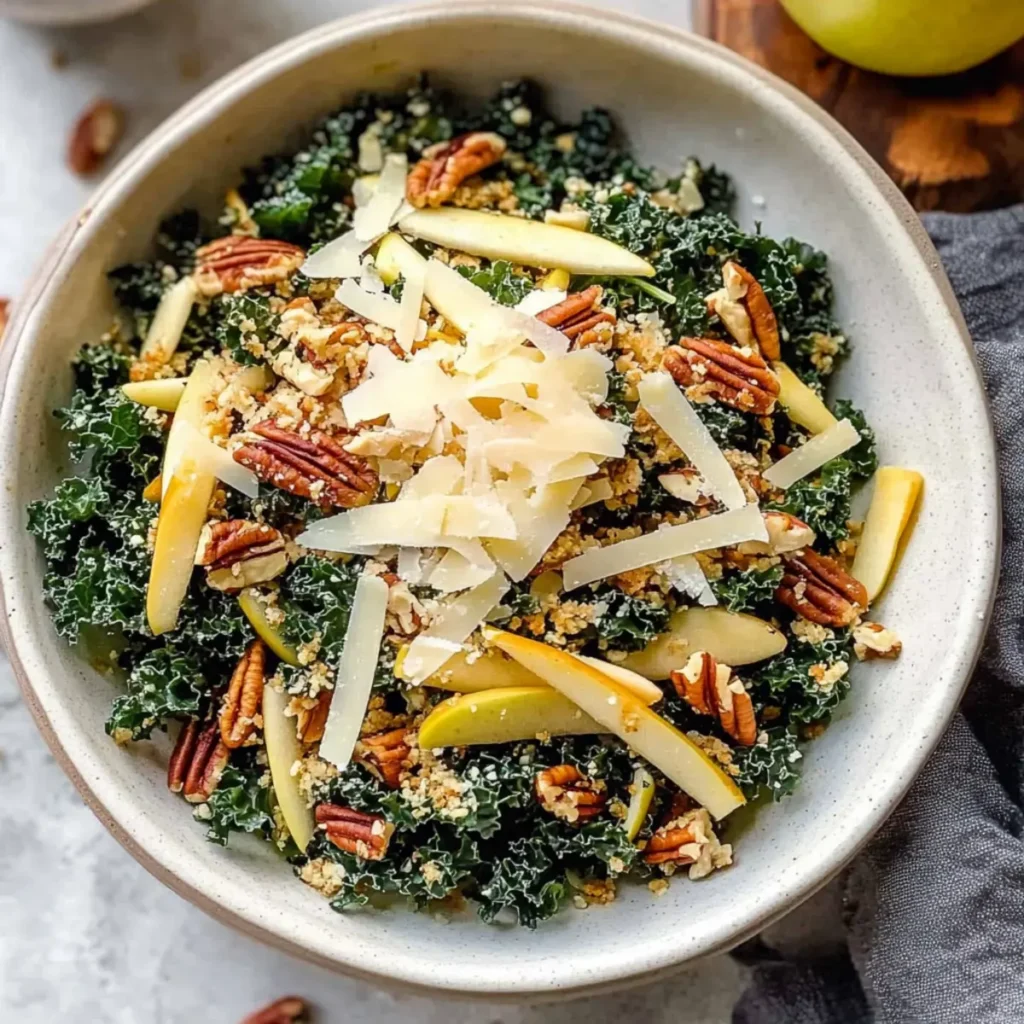The Caesar Salad is more than just a dish; it’s a symphony of flavors and textures that has captivated the hearts of food enthusiasts around the globe. Originating from Tijuana, Mexico, in the 1920s, this salad has evolved from a simple combination of ingredients to a gourmet staple in fine dining establishments. Its popularity lies not only in its delicious taste but also in its ability to adapt to various dietary preferences, making it a versatile option for any meal.
Ingredients Deep Dive
A masterpiece of simplicity, the classic Caesar Salad hinges on the quality and harmony of its few ingredients. Each component brings a unique element to the dish, creating a balance between texture and flavor that has captivated taste buds for nearly a century.
- Romaine Lettuce: The foundation of the salad, romaine offers a crisp texture and a fresh, slightly bitter taste that complements the richness of the dressing.
- Parmesan Cheese: Adds a nutty, salty depth that contrasts beautifully with the tangy dressing. Freshly grated Parmesan is preferred for its superior flavor and texture.
- Croutons: These crunchy morsels introduce a textural contrast that is essential to the salad’s appeal. Homemade croutons, lightly seasoned and toasted, elevate the dish significantly.
- Caesar Dressing: The soul of the salad, this creamy dressing is a blend of garlic, anchovy, lemon juice, Dijon mustard, and Worcestershire sauce, creating a rich tapestry of flavors that define the Caesar Salad.
Optional ingredients such as anchovies, chicken, or bacon can be added to cater to personal preference, demonstrating the salad’s versatility.
The Perfect Caesar Dressing
The magic of the Caesar Salad lies in its dressing – a creamy, umami-packed emulsion that binds the ingredients together. Crafting the perfect Caesar dressing is about balancing the bold flavors of garlic, anchovies, and lemon to achieve a harmonious finish.
- Garlic: Start with fresh garlic for a robust base. Crushing or finely mincing the garlic releases its oils, infusing the dressing with a potent flavor.
- Anchovies: These small fish are the secret to the dressing’s depth of flavor. Anchovy paste can be used for convenience, but whole anchovies, mashed into a paste, offer the best taste.
- Lemon Juice: Freshly squeezed lemon juice adds brightness and acidity, cutting through the richness of the dressing.
- Dijon Mustard and Worcestershire Sauce: Both ingredients add layers of complexity, enhancing the umami and tangy profile of the dressing.
The key to a great Caesar dressing is emulsification – the process of slowly whisking oil into the other ingredients to create a smooth, creamy texture. Patience and steady whisking are essential to achieving the perfect consistency and flavor.
Croutons: The Crunchy Delight
A Caesar Salad without croutons is like a sunny day without sunshine. These golden, crunchy pieces of bread not only add a delightful texture but also act as sponges, soaking up the dressing and integrating it into every bite. Making your own croutons is a simple process that allows for customization in flavor and crunchiness.
- Bread Selection: While day-old bread is often recommended for its firmness, almost any type of bread can be used, allowing for a range of textures and flavors. Whole grain, sourdough, or ciabatta offers distinct tastes and textures that can elevate your salad.
- Seasoning: A mix of olive oil, garlic, salt, and pepper is classic, but adding herbs like rosemary, thyme, or oregano can introduce a new dimension to your croutons.
- Baking: Evenly spreading the seasoned bread cubes on a baking sheet and baking until golden ensures that each crouton is crisp on the outside while remaining slightly chewy inside.
By mastering homemade croutons, you not only enhance your Caesar Salad but also gain a versatile skill for adding a crunch to other dishes.
Preparing the Lettuce
The crisp, refreshing bite of romaine lettuce is essential to the classic Caesar Salad. Its sturdy leaves are perfect for holding the rich dressing, making the choice and preparation of the lettuce a key step in creating the perfect salad.
- Choosing Lettuce: Look for fresh, crisp romaine with vibrant green leaves. Avoid lettuce with wilted or brown edges.
- Cleaning: Romaine lettuce must be thoroughly washed to remove dirt and grit. Separating the leaves and rinsing them under cold water, followed by a good spin in a salad spinner, ensures they are clean and dry.
- Prepping: Tear the lettuce into bite-sized pieces rather than cutting with a knife to avoid bruising the edges. This method preserves the freshness and crispness of the leaves.
Properly prepared lettuce is the foundation of the salad, providing a fresh, crisp base that contrasts beautifully with the creamy dressing and crunchy croutons.
Assembling the Classic Caesar Salad
With all the components ready, assembling the salad is the final step in bringing this culinary masterpiece to life. The key is to gently toss the ingredients so that each leaf of lettuce is lightly coated with dressing, ensuring a perfect balance of flavors and textures.
- Dressing the Lettuce: In a large bowl, drizzle the Caesar dressing over the romaine lettuce. Using your hands or salad tongs, toss the lettuce to ensure it’s evenly coated. The goal is to lightly dress the salad without overpowering the lettuce.
- Adding the Parmesan: Sprinkle grated Parmesan cheese over the dressed lettuce, adding a salty, nutty flavor that complements the tangy dressing.
- Incorporating Croutons: Add the homemade croutons last to maintain their crunch, gently tossing them with the dressed lettuce and Parmesan.
The art of assembling a Caesar Salad lies in the balance of its components, creating a harmonious dish that’s greater than the sum of its parts.
Variations on the Classic
The beauty of the Caesar Salad lies in its adaptability. Here are some popular variations that cater to different dietary preferences and tastes:
- Vegan Caesar Salad: Swap out traditional ingredients for plant-based alternatives, such as cashew-based dressing, nutritional yeast instead of Parmesan, and chickpea croutons.
- Gluten-Free Caesar Salad: Ensure that the croutons are made from gluten-free bread and that the dressing is free of any gluten-containing ingredients.
- Adding Protein: Grilled chicken, shrimp, or even tofu can be added to the salad for a more filling meal, making it suitable as a main course.
These variations ensure that everyone can enjoy a Caesar Salad, regardless of their dietary restrictions or preferences.
Pairing with Drinks and Dishes
A well-made Caesar Salad is a versatile companion to many meals. Here are some pairing suggestions:
- Wine Pairing: A crisp, acidic white wine like Sauvignon Blanc or Chardonnay complements the salad’s creamy dressing and tangy flavors.
- Main Courses: The salad pairs beautifully with Italian dishes, grilled meats, or seafood, making it a versatile starter or side.
- Complementary Sides: For a more elaborate meal, serve the Caesar Salad with a side of garlic bread or a light soup to balance the meal.
The right pairings can elevate the dining experience, making the Caesar Salad a central part of a sophisticated meal.
The Art of Serving
Presentation plays a significant role in the enjoyment of any dish, and the Classic Caesar Salad is no exception. Serving this iconic dish with an eye for aesthetics not only enhances its visual appeal but also elevates the overall dining experience.
- Plating Techniques: Consider layering the dressed lettuce leaves on a platter, sprinkling the Parmesan cheese evenly, and then scattering the croutons atop. For a touch of elegance, garnish with whole anchovy fillets and a lemon wedge on the side.
- Serving Utensils: Use wooden salad servers or large, elegant spoons and forks that allow guests to serve themselves without disturbing the arrangement of the salad.
- Presentation: The final presentation should invite diners into the dish, highlighting the freshness of the ingredients and the care taken in its preparation. Simple, clean plating can significantly impact the perception and enjoyment of the salad.
Remember, the goal is to create a dish that looks as good as it tastes, making every bite a delight not only to the palate but also to the eyes.
Nutritional Information and Health Benefits
The Classic Caesar Salad, while indulgent with its creamy dressing and Parmesan cheese, also offers nutritional benefits that make it a worthwhile addition to any diet.
- Romaine Lettuce: High in vitamins A and K, romaine lettuce is also a good source of folate and fiber, supporting vision, blood clotting, and digestive health.
- Parmesan Cheese: Although high in calories, Parmesan is rich in calcium and protein, essential for bone health and muscle function.
- Anchovies: These small fish are a powerhouse of omega-3 fatty acids, which are beneficial for heart health and reducing inflammation.
While mindful of portions, especially concerning the dressing and cheese, incorporating a Classic Caesar Salad into your meal plan can contribute to a balanced diet.
FAQs About Classic Caesar Salad
Can I make Caesar Salad ahead of time?
Yes, but for the best texture, keep the dressing, croutons, and lettuce separate until just before serving to prevent the lettuce from wilting and the croutons from becoming soggy.
Is Caesar Salad healthy?
In moderation, Caesar Salad can be part of a healthy diet. Opt for lighter dressing options and add protein to make it a more balanced meal.
Can I use a different type of lettuce?
While romaine is traditional for its crunch and durability, other crisp lettuces like iceberg or baby gem can be used as alternatives.
How can I make my Caesar Salad dressing anchovy-free?
For a vegetarian option, capers can be used as a substitute, offering a similar briny flavor without the use of fish.
What are some common protein additions to Caesar Salad?
Grilled chicken, shrimp, or salmon are popular choices that turn the salad into a hearty main dish.
How can I make a Caesar dressing without raw egg?
Use mayonnaise as a base for your dressing to achieve a similar creamy texture without using raw eggs.
Conclusion and Final Thoughts
The Classic Caesar Salad remains a beloved dish for its perfect blend of flavors, textures, and simplicity. Whether served as a side dish or a main course with added protein, its versatility and widespread appeal make it a staple in both home kitchens and restaurants around the world. By following the guidelines and tips outlined in this article, you can elevate your Caesar Salad from a simple salad to an exquisite culinary experience. Remember, the best dishes are made not just with ingredients but with care and creativity. Enjoy the process of making your Classic Caesar Salad and share the joy it brings with others.






